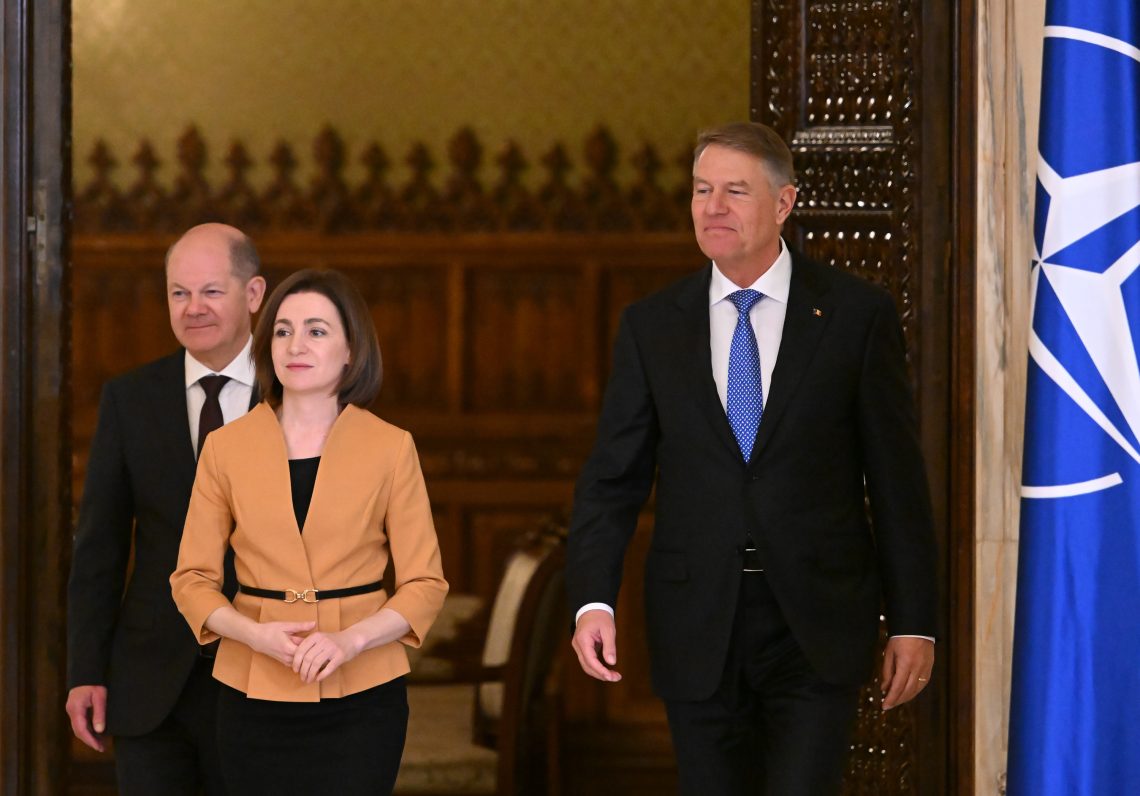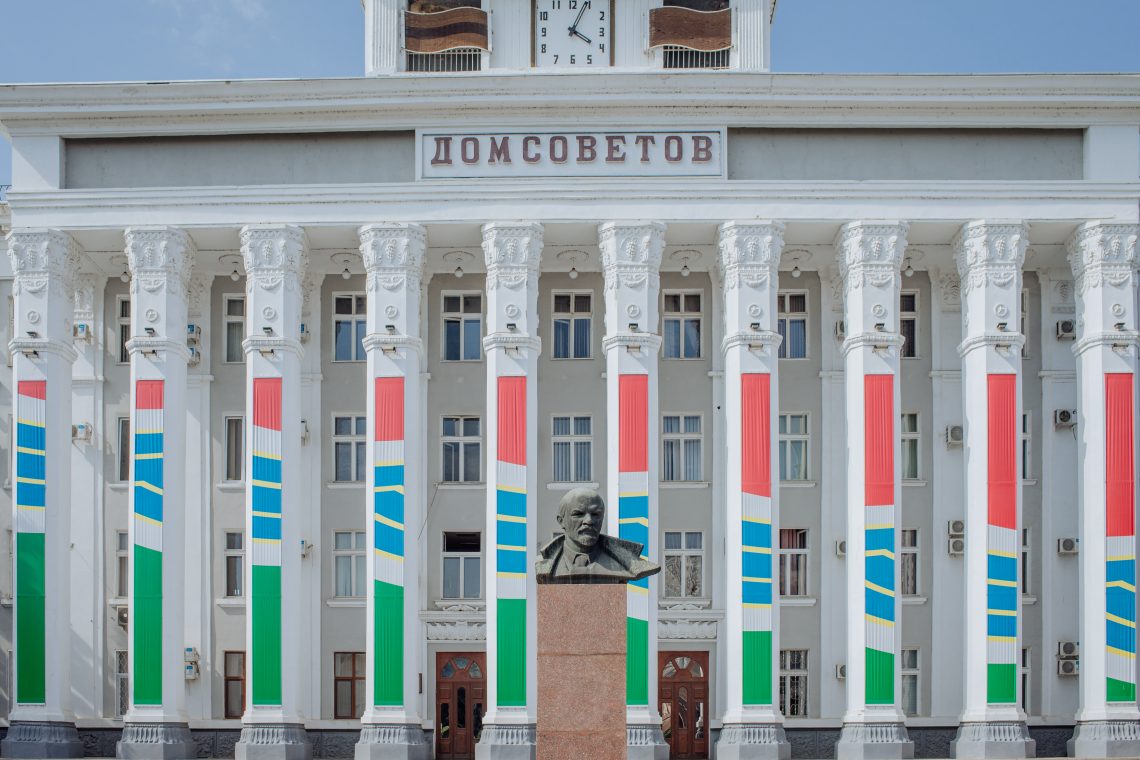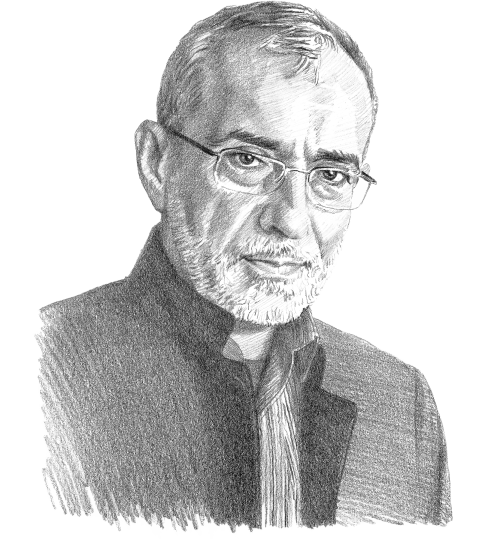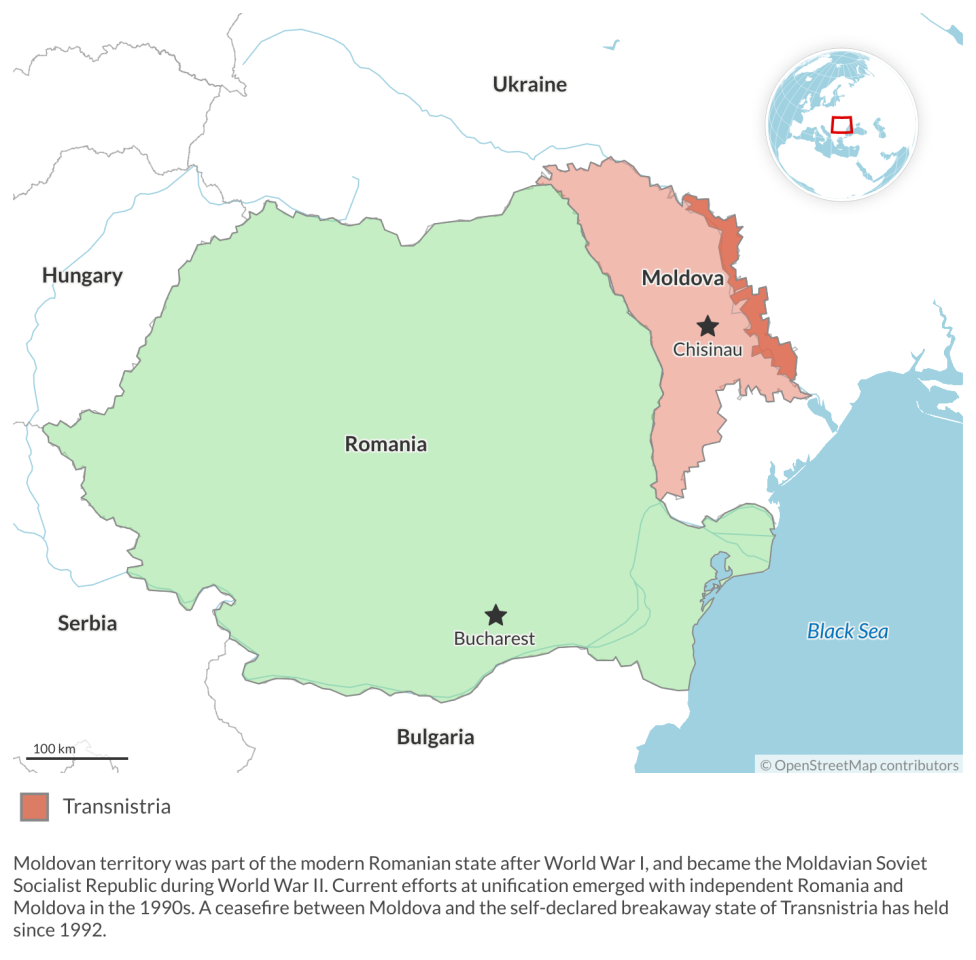Romania-Moldova reunification: Three scenarios
Unifying Moldova with Romania is an increasingly relevant notion, with a soft integration through EU membership being the most plausible path. But any such process still remains unlikely.

In a nutshell
- The war in Ukraine has put fresh attention on Romania-Moldova ties
- Gradual unification is more plausible than a radical process
- Technical and political hurdles make any reunification unlikely
Among the many consequences of the Russian invasion of Ukraine has been the reemergence of public discussions in both Romania and the Republic of Moldova concerning the potential reunification of these two postcommunist countries. For a long time, that prospect was seen as impossible, barring tectonic shifts in regional alliances and the international balance of power. The topic was relegated to the back burner, largely the domain of speculative and electoral rhetoric.
Then, in 2022, Romanian and Moldovan elites were suddenly confronted with just such a geopolitical earthquake, seemingly opening a window of opportunity. At one point, as Russian forces were advancing and their objectives or ultimate success still unknown, voices in both Romanian-speaking states began raising the possibility of an emergency move toward reintegration. Amid the period of uncertainty weeks before Russia’s invasion of Ukraine, Bucharest and Chisinau finalized a series of cooperation agreements on a range of issues, from granting Moldova 100 million euros in nonreimbursable development aid to strengthening partnerships on investment and energy security. For a time, a once far-fetched scenario seemed to become a more likely prospect.
Why reunify?
Supporters of reunification cite various advantages. Some are related to Moldova’s ethnic majority, which shares linguistic, cultural and other ties with many Romanians. There is also the historical precedent that Moldova’s territory today was traditionally part of the Romanian cultural and political sphere, and of the modern Romanian state following World War I. Some point to a feeling of historical injustice over the Soviet occupation in 1940, which still needs to be rectified.
Other reasons are more pragmatic. Opinion polls have usually identified the most popular justification as the supposed social and economic benefits brought by reunification, followed by the “national” argument outlined above, and finally the prospect of quicker accession to the European Union and NATO as a distant third.
Still, the prospect is only favored by some of the public in both countries. In Moldova, the trend shows a slow but steady increase in support for unification (currently standing at around 40 percent, though the trend is easier to pinpoint than absolute numbers). In Romania, the variation is much larger; surveys taken in recent years have tended to report more than a 50 percent threshold of Romanians backing some future unification with the Republic of Moldova.
Most fundamentally, if Moldova reunites with Romania, the latter will add an additional 33,846 square kilometers to its approximately 238,397 square kilometers of territory.
Facts & figures
Border history
- On August 2, 1940, the Soviet regime created the Moldavian Soviet Socialist Republic (MSSR) as part of the USSR
- The new republic’s borders did not fully coincide with the territory occupied from Romania. The northern part of the occupied province (the Herta and Hotin regions) and the southern part (the Cetatea Alba and Ismail counties) were annexed into the Ukrainian Soviet Socialist Republic.
- The new MSSR was instead granted the territory beyond the Dniester River, where the Soviets had formed the Moldavian Autonomous Soviet Socialist Republic (ASSR) within the Ukrainian SSR during the interwar period.
- The current, internationally recognized borders of the Republic of Moldova – after declaring independence from the Soviet Union in August 1991 – thus coincide with the borders of the MSSR formed by the annexation of Bessarabia to the ASSR.
Although Moldova (with a 2021 gross domestic product of $14 billion) is economically smaller than Romania (2021 GDP of $284 billion), the eastern neighbor has various untapped resources and potential for development. Its population of approximately 2.6 million would be added to Romania’s existing 19 million people, which could influence demographic dynamics like workforce size, age structure and urbanization patterns (Romania is one of the European countries most affected by the negative trends of outgoing immigration and low birth rates). In general, unification will increase trade, investment and economic activity in the new country – delivering a significant boost that would consolidate Romania’s geopolitical and economic footprint in the region and the EU.
Public support does seem to be trending upward: only 15-20 percent of Moldovans backed reintegration a decade ago, a figure that rose above 40 percent by 2021. But precisely what kind of reunification citizens have in mind is not clear. Political rhetoric usually implies one of three scenarios (or a combination thereof). Tellingly, none of them have been publicly and clearly articulated, revealing something about the degree of preparedness among decision-makers in both countries for implementing a plan.
Scenario 1: Unification by absorption
Under a radical approach, a comprehensive process of constitutional and administrative integration would extend Romania’s “basic law” over the territory of Moldova. This would be reinforced by an administrative framework designed to accommodate the new political reality.
The Romanian state’s authority would be immediately established on the territory of the Republic of Moldova, including those of security and law and order authorities as well as an administrative reorganization per the Romanian system. This would include the extension of social services by the Romanian state; the establishment of administrative bodies, such as prefectures; parallel circulation of the national currency, to be followed by the replacement of the local currency; readjusting budgetary flows; introducing the Romanian legal system; and so on. This approach would ensure the operational presence and direct responsibility of Romanian authorities before embarking on the difficult and time-consuming endeavor of navigating the frictions inherent in unifying two systems.
Facts & figures
A precedent for such a scenario is found not only in German reunification but also in Romania’s own history: that of 1918, when a reunification took place after the collapse of Tsarist Russia, and when the control of territory was first secured before incorporation and integration.
The main problems with this approach come from three sources. First is the intrinsic operational difficulty of a rapid integration of regimes, systems, budgets, registries and more. The case of 1918 is largely unrepeatable, as underlying conditions – social, demographic and political – have significantly changed.
Second, such a scenario would need massive support from the Moldovan population. A union without explicit and sufficient buy-in would become a vulnerability to the very state that seeks it, namely Romania. Finally, there is the issue of Moldovan elites and decision-makers: to what extent will they be willing to engage in a process that will eventually eliminate their independent social and political functions? As has been noted, maintaining basic stability is the crucial priority of Moldova right now. How destabilizing might such a scenario be?
Scenario 2: Gradual unification
Under a more gradual approach, integration would proceed in small steps: sector by sector, domain by domain and function by function. Those sectors that could be unified more easily, or would be necessary for certain sequencing procedures, would come first. The obvious advantage of this scenario is to cushion the shock of unification.
Several relevant proposals have recently emerged, including the idea of “Integrated Common Spaces.” According to its authors, integration should first manifest through academic, educational and cultural cooperation. Upon that foundation, steps may be made in the economic and energy sectors. Romanian investment in Moldova would be reconsidered, shifting from a logic of aid to a logic of functional integration. All in all, it sounds reasonable.
One challenge is presented by the EU framework itself, and the barriers to integrating EU and non-EU territory, especially on economic issues. But a bigger challenge (again) is how far Moldovan elites will be willing to go along with a process, even a gradual one, that plans to end their social and political functions.
Acknowledging this problem, one proposal has been made for a formal understanding between the political classes of Romania and Moldova regarding reunification. Regardless of the political configuration, a basic agreement would be made in terms of the means and ends of unification – reassuring signatories that no surprises are in store that would jeopardize their general positions, as long as the major objective is pursued. There is a Romanian precedent for such a deal, from the country’s accession to the EU: the Snagov Declaration, an agreement signed in 1995 by all Romanian political forces to support a national consensus over the country’s Western geopolitical orientation. Yet replicating such a model remains an open question. This second scenario ultimately seems even less clear and its implementation less evident than the first.

Scenario 3: Indirect unification
A third scenario would proceed through Moldova’s integration into the EU, involving the entire process of pre-accession and accession. In the end, the fact that both countries would operate under common European institutions, practices and legislation will make for a de facto union.
This proposal has the advantage of being less disruptive for the two countries and seems to be the approach – at least theoretically – currently favored by both groups of elites. A steady, slow process, allowing a stable period for all parties to adapt as a part of the EU accession process.
Upon closer inspection, this scenario faces major hurdles. A key question is the EU’s appetite for a new eastward enlargement, especially given the current crises, including the war in Ukraine. Even more important are the internal capacities of Moldova to meet the requirements for accession in a reasonable time frame. From a demographic crisis (falling from 4.3 million inhabitants in 1991 to under 2.5 million in 2022) to a skilled workforce gap and a tiny economy, Moldova may have intrinsic structural limitations – raising concerns about its ability to succeed as an EU candidate.
Finally, one may also ask whether this scenario is truly a “reunification” at all. Moldova’s integration into the EU would not itself be a precondition – let alone a guarantee – for a union with Romania. On the contrary: joining the EU will only strengthen the idea of Moldova as a distinct state and reinforce the status of the ruling elite, demonstrating the country’s institutional capacity to meet the high bar of European integration. Moreover, the process itself has the potential to mobilize the Moldovan population, strengthening their commitment to the political and national identity.
Facts & figures
Transnistria
- Transnistria is a breakaway region in Eastern Europe, internationally recognized as part of the Republic of Moldova but operating as a self-declared independent state.
- Since the early 1990s, Transnistria has faced ongoing political, economic and security challenges, leading to a frozen conflict.
- The region’s status remains unresolved, and it continues to experience issues related to unrecognized statehood, limited international recognition, separatist aspirations, border disputes, and tensions with the central government in Moldova.
- These problems have hindered efforts to find a peaceful resolution and have had significant implications for regional stability.
The Transnistria question
To add a complicating factor, these three scenarios each fall under the shadow of one major problem: the self-proclaimed republic of Transnistria. If Transnistria becomes part of what is now (de jure) the Republic of Moldova, and if Moldova’s unification with Romania is put on the table, the issue of incorporating Transnistria into Romania raises huge challenges. Unlike the territory between the Prut and Dniester Rivers, there is almost no historical or political precedent to Transnistria being a part of Romania. Neither would the current ethnic composition of Transnistria, despite the presence of Romanian speakers, support such a process.
The Transnistria question is hard to digest for both the Republic of Moldova and (perhaps especially) Romania, particularly from the perspective of national identity. It is not an impossible undertaking, but – assuming the ambition is there – it would require the backing of Romania’s and Moldova’s Western partners for the unification of the two states and the resolution of the fate of Transnistria. Would these parties be willing to administer a process that involves a change in borders in Europe – including to a NATO and EU member state like Romania?
To sum up, none of the three scenarios for unification currently looks very probable. Yet, as recent developments have demonstrated, “black swan” events are always possible. Building such wild-card scenarios is always constructive, helping us understand the underlying dynamics in this very sensitive part of the world.










